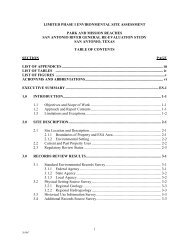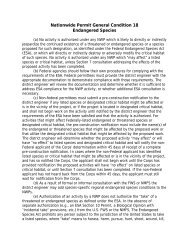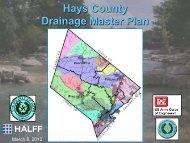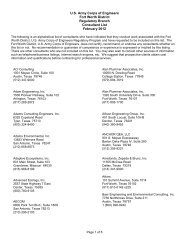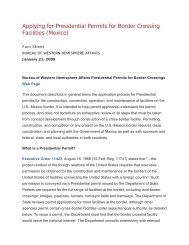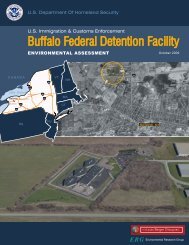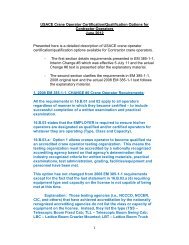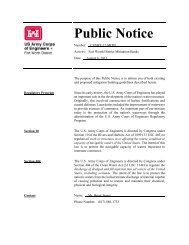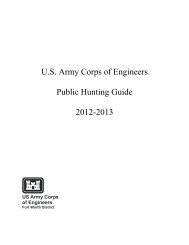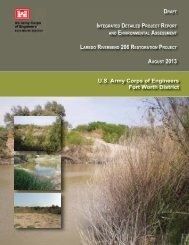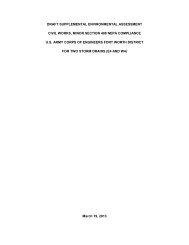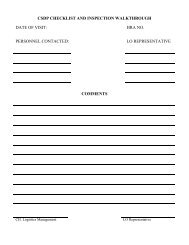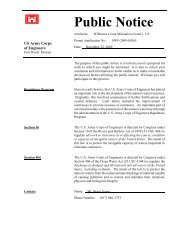environmental assessment us border patrol, tucson sector
environmental assessment us border patrol, tucson sector
environmental assessment us border patrol, tucson sector
Create successful ePaper yourself
Turn your PDF publications into a flip-book with our unique Google optimized e-Paper software.
3-371234567891011121314151617181920212223242526272829303132333435363738394041effects, but rather as an indicator of a minimum level of GHG emissions that may warrant somedescription in the appropriate NEPA analysis for agency actions involving direct emissions ofGHGs (CEQ 2010).3.9.2 Environmental Consequences3.9.2.1 No Action AlternativeImplementation of the No Action Alternative would have no effect on air emissions in theCochise County airshed. Indirect impacts from illegal activity would continue. More agentswould be required to <strong>patrol</strong> the remote eastern zones of the USBP Douglas Station’s AOR toaccount for the necessary drive time to their <strong>patrol</strong> areas. Air emission impacts from CBVactivities and subsequent USBP interdiction activities would be greater under the No ActionAlternative than any of the other alternatives.3.9.2.2 Preferred AlternativeTemporary and minor increases in air emissions would occur from the <strong>us</strong>e of constructionequipment (comb<strong>us</strong>tible emissions) and the disturbance of soils (fugitive d<strong>us</strong>t) under thePreferred Alternative. The following paragraphs describe the air calculation methodologiesutilized to estimate air emissions produced by the construction of the FOB.Fugitive d<strong>us</strong>t emissions were calculated <strong>us</strong>ing the emission factor of 0.19 ton per acre per month(Midwest Research Institute 1996), which is a more current standard than the 1985 PM-10emission factor of 1.2 tons per acre-month presented in AP-42 Section 13 Miscellaneo<strong>us</strong> Sources13.2.3.3 (USEPA 2001).USEPA’s NONROAD Model (USEPA 2005a) was <strong>us</strong>ed, as recommended by USEPA’sProcedures Document for National Emission Inventory, Criteria Air Pollutants, 1985-1999(USEPA 2001), to calculate emissions from construction equipment. Comb<strong>us</strong>tible emissioncalculations were made for standard construction equipment, such as front-end loaders,backhoes, bulldozers, and cement trucks. Assumptions were made regarding the total number ofdays each piece of equipment will be <strong>us</strong>ed, and the number of hours per day each type ofequipment will be <strong>us</strong>ed.Construction workers would temporarily increase the comb<strong>us</strong>tible emissions in the airshedduring their commute to and from the project area. Emissions from delivery trucks would alsocontribute to the overall air emission budget. Emissions from delivery trucks and constructionworkers traveling to the job site were calculated <strong>us</strong>ing the USEPA MOBILE6.2 Model (USEPA2005b, 2005c, and 2005d).The total air quality emissions were calculated for the construction activities to compare to theGeneral Conformity Rule. Summaries of the total emissions for the Preferred Alternative arepresented in Table 3-5. Details of the analyses are presented in Appendix C.Douglas FOB EADraftAug<strong>us</strong>t 2011



